Throughout a home or business, for efficiently moving cooled or heated air, dry and clean air ducts are instrumental. With a building’s HVAC system (heating, ventilation, and air conditioning), the building’s air ducts are directly linked. The moisture from air ducts needs to be properly eliminated when water intrudes. This is critical!
Why? Because moisture buildup in air ducts can lead to big problems! But wait a minute… How does that moisture even get there? What are these “big problems” that can be caused by a buildup of moisture in air ducts?
Let’s take a look.
Air Duct Moisture – How Does It Get There?
It is not an uncommon occurrence, the air duct moisture referred to here. Water can easily be transferred into air ducts when there are ruptured pipes or a leaky roof. Frequently, a watertight seal is lacking on roof-installed ductwork. That means, into the interior vents and ducts and through the seams, a pathway for water is allowed.
Moisture can find its way into air ducts in other ways, as well. Near an air conditioning system’s cooling coils, condensation can accumulate. This can cause air duct moisture. Condensation is expected in such cases. This is because, inside the HVAC, the air temperature is cooler than the air surrounding it. This leads to condensation buildup.
Why Is Moisture Buildup in Ducts a Problem?
Mold growth is the number one concern when air ducts accumulate moisture. Within 48 hours, mold spores can flourish under the right conditions. All mold needs to grow is warm temperatures, moisture, and an organic food source. For a mold outbreak, all the necessary sustenance is provided by air ducts.
Rapidly, throughout your home, mold spores growing in air ducts flow through vents. These airborne spores land on clothing, carpeting, and furniture. Your indoor mold problem has just been exacerbated! There is also a severe reduction in indoor air quality. Serious health problems can be triggered by breathing mold.
Mold growth isn’t the only problem, however.
Further Problems with Moisture Buildup in Ducts
Your insulation’s R-value can be reduced due to moisture inside of air ducts. The insulation is compressed by the water, over time. This means less efficiency in your insulation. If there is a decrease in your installation’s R-value, you can expect energy loss and higher utility bills.
But wait… there’s more!
Damage From Water
Your roof, ceilings, and walls can be subject to water damage if there is excess moisture inside your building’s air ducts. Decay and corrosion can be the eventual effects of excess moisture in the materials just mentioned. If, for prolonged periods, the problem is left unaddressed, the integrity of the building can be compromised by this structural ruin.
Our recommendation: Book regular, professional air duct cleaning. If water damage has already occurred, here’s what you can do…
Assistance with Water Damaged Surfaces
Provision can help if you have experienced damage due to moisture in your home or business as a result of moisture in air ducts. Don’t put up with mold, water damage, and/or mildew one more day. Call the experts.
Contact us if you would like to set up an appointment or ask any questions you may have.








